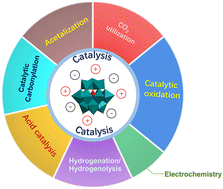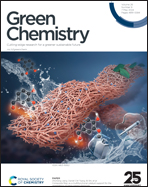Ionic liquid-stabilized metal oxoclusters: from design to catalytic application
Abstract
Metal oxoclusters constitute a dynamic and expanding domain of research with versatile applications in catalysis, materials science, medicine, and beyond. Particular attention has been given to their potential utility due to their distinctive properties. The incorporation of ionic liquid (IL) environments into metal oxocluster (MOC) systems offers numerous advantages, including higher stability, tunable coordination to metal sites, and the capability to dissolve diverse substrates for catalytic applications. Although IL-stabilized MOCs (IL–MOCs) are still in the developmental phase, their potential to revolutionize catalysis is substantial. As research progresses, IL–MOCs will likely play an increasingly important role in catalysis. This perspective article focuses on the preparation methods of IL–MOCs, how the MOCs are stabilized/regulated by ILs or even PIL (polymeric ILs), as well as their catalytic applications, including oxidation, epoxidation, oxidative desulfurization, biomass oxidation, hydroxylation of benzene, acid catalysis, CO2 activation and utilization, carbonylation, hydrogenation/hydrolysis, electrochemistry, etc. IL–MOCs have played a crucial role in the development of sustainable chemistry in the light of the potential opportunities and challenges. The unique advantages make IL–MOCs outstanding candidates for industrial catalysts.

- This article is part of the themed collections: 2024 Green Chemistry Reviews and 2024 Green Chemistry Hot Articles


 Please wait while we load your content...
Please wait while we load your content...